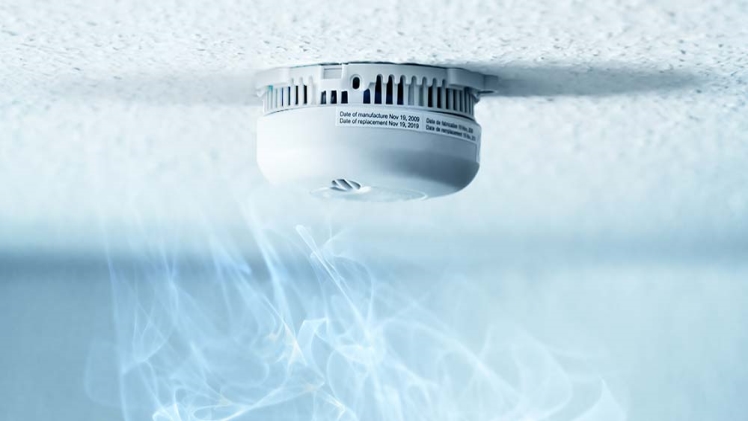Interconnected smoke detectors have a decisive advantage: They pass the warning signal on to all smoke detectors installed in the apartment and warn residents in all rooms at the same time. Investing in a networked smoke alarm system can pay off, especially for the hard of hearing or in the event of a fire at night.
When deciding on a wireless smoke detector, the functionality of the entire smart home system should be considered, because after all, the smoke detector depends on a smart home center and a system app that network all components with one another.
-
Battery type:
The clear trend in terms of smoke detectors is towards smoke detectors with permanently installed long-life batteries. In its latest test, Stiftung Warentest has focused exclusively on models with non-replaceable batteries. The reason for this is certainly that smoke alarms should be replaced after 10 years anyway – and the lithium battery of most smoke alarms lasts just as long.
-
Battery life:
While a battery life of 10 years is common, there are some smoke detector models that only guarantee a running time of 5 to 7 years. In the case of smart home smoke detectors, the battery situation must also be taken into account, as a second battery is often installed here, which only provides radio communication with the smart home center for 2 to 5 years. The associated app provides information on the charge level and warns of the empty battery. The battery can then be replaced.
-
Alarm volume:
The alarm volume for most smoke alarms is given as 85 decibels. In the test, however, different haunting tones emerged. Smoke detectors that cover several frequency ranges are particularly recommended. Such an uneven signal is a major disruptive factor for the hearing and thus a more effective warning.
-
Contamination compensation:
Smoke detectors with this function deliberately react less sensitively over time, so that accumulated dirt and dust in the device is less likely to trigger a false alarm. Smoke detectors without this function can be cleaned by hand every two years and are thus protected against false alarms caused by dust particles.
-
Test button:
At best, there should be a large test or stop button in the middle of the smoke detector so that you can quickly turn off the smoke detector in the event of a false alarm with a long object. Many models can also be muted for 10 minutes using the test button.
-
LED function display:
Many smoke alarms flash every 40 seconds around the clock to indicate the active operating status. Just in the bedroom can disturb that. If so, opt for a smoke detector without continuous flashing or a model that only lights up during the day.
-
Bi-sensor processor technology:
Smoke detectors with this technology can not only detect smoke but are also sensitive to heat. When used in kitchen and smoking rooms are less likely to set off a false positive.
-
Mounting method:
The option of simply sticking the smoke detector to the ceiling is particularly practical. A magnetic holder is usually glued to the wall and the smoke detector is attached.

